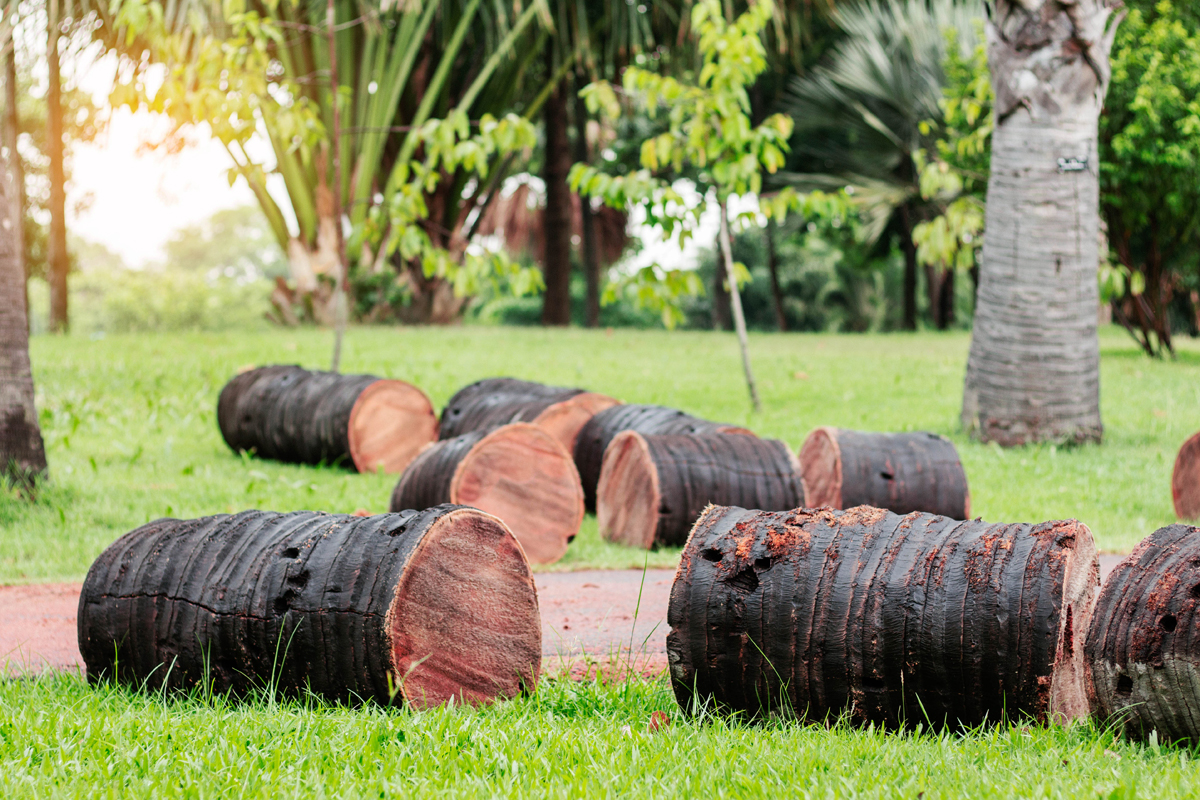
While palm trees typically do not require many maintenance needs over a lifetime, it’s crucial to keep an eye out for any damage to the trunk. Let’s look at a few scenarios below and what you can do when you see signs of damage or disease.
Single-Trunk Palm Trees
One way to ultimately terminate this tree is to sever off the growing tip or ‘crownshaft’ as it’s known. The trunk will be unable to sprout a new growing tip in place of the now severed crownshaft. Without the extra foliage to synthesize the incoming light, the tree will grow weak, beginning to rot. If you cut the top off of any single-trunk species, your best bet is to simply plant a new tree in its place.
The Mexican Fan palm, Royal palm, Christmas palm and Cabbage palm are all examples of single-trunk palm species. All of these options are great for homeowners looking to add palm trees to their property.
Clustering Palm Trees
Clustering palms are truly unique, with multiple trunk stems. This means you will be able to shave away some trunks without killing the palm. If the individual palm trunk is the only thing removed, the plant will not be able to heal naturally. If you cut the trunk close to root level, suckering explodes at this area, eventually leading to the sprouting of new palm tree trunks.
The suckering process and rejuvenation will only occur in the case of a healthy clustering palm. Sometimes, diseased or distressed trees will not always develop new suckers. This will lead to the tree’s untimely demise.
Palm Tree Trunk Wounds
Naturally, palm trees lack cambium. This is a layer of tissue found behind the tree bark, which creates growth rings that are visible on the tree. Any wound inflicted on the trunk is unable to repair itself, meaning the wounds will remain visible on the tree for the rest of its life.
The wounds can become dry and brittle over time, unless weather conditions include lots of rainfall and/or high humidity. Insects and fungal infections can penetrate the trees, resulting in massive damage to the articular system.
Palm Tree Pruning
When it comes to pruning palm trees, it’s important to keep from severing the downshaft. The professionals recommend removing just the right amount of fronds. Do not introduce these palms to any new diseases.
Palm tree pruning can be a difficult DIY task so it’s best left to the pros. If you wish to do this yourself, it’s advised to only remove broken fronds that are dead with no visible color on them.
Tree Removal Services In Arizona
Hayward Tree is offering tree removal from above using a specialized crane. The benefit of this service is that we can remove your tree from above and avoid tearing up your yard and leaving drag marks. No broken limbs, no crushed bushes. It’s quick, efficient, and leaves your property looking clean, undisturbed, and untouched. Best of all, it’s at no additional cost to you! Contact our team today for a free estimate!




